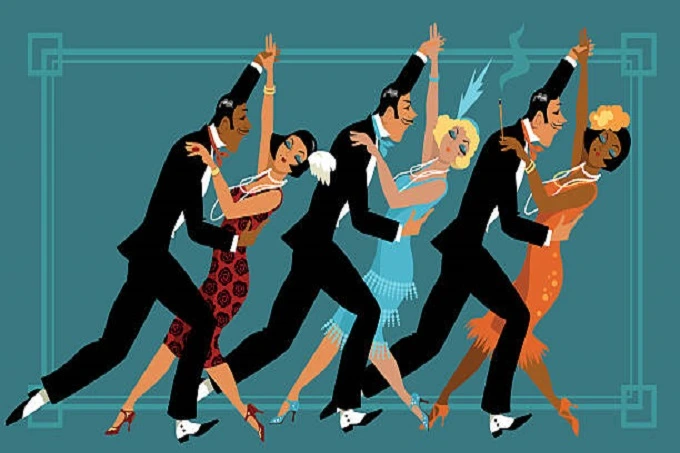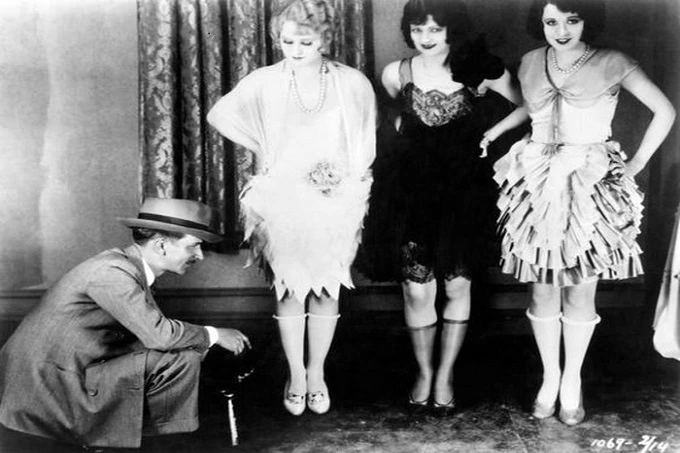Flappers in the 1920s: how did they surprise their contemporaries and what did they strive for

A hundred years ago, women appeared to awaken after centuries of sleep: it became clear that life is only given once, short, and that it makes sense to enjoy it with pleasure, free of ridiculous and pointless constraints. And so, a kind of boycott was declared against everything that prevented living in a new way, such as corsets, heavy dresses and hairstyles, prejudices against the right to work, the ability to leave the house alone, and, in addition to these things, innocence before marriage, marital fidelity, a sober head, and restrained manners. Women who took part in subversive activities were called flappers.
What were the girls of the “past twenties”

Young women pushed back against the customs of a previous era, which dictated that they should spend most of their life at home, tending to household responsibilities, growing old slowly and unattractively, and knowing about the most significant events only through the pages of novels. Everything was turned upside down by the First World War, and after it was finished, it became clear that some people did not want to return to the way things were before the war.
After the war, significantly fewer men than women, which led to a gender imbalance. As a result of this imbalance, it became clear that the supposedly less capable gender was capable of a great deal and that women were able to handle responsibilities that were traditionally regarded as men’s responsibilities. And if this is the case, then it is only right to work toward achieving equal opportunity. However, the flappers did not participate in a fight for their rights; rather, they lived their lives according to their wishes.
Since the 19th century, society had been dealing with the preconditions for this revolt in appearance: now the odds were against wearing a corset around the waist, now a haircut or even a bang instead of a decent hairdo, and then came the Roaring Twenties, when many things from the tried and tested, and a fair amount of new, revolutionary ones, were in fashion.
Girls of the 1920s (and young women, in general, are referred to as flappers) wore clothing that was regarded to be extremely expensive for the era in which they lived. Of course, they did not wear corsets; instead, they wore straight dresses with a low waist and legs exposed to the knees. It was fashionable to wear hats with short tops and high heels, yet the demand for hats remained. Both women chose to wear light, see-through materials and styles that gave a touch of boldness to their clothes. For example, the women’s hemlines were lifted while strolling or dancing, exposing even more of their legs.
What did the flappers do

And they danced a lot, but not the dances their mothers and governesses had taught them. Instead, they danced the “outrageously immoral” Charleston and shimmy, and jazz, which traditionalists would not understand, came into play. Flappers went to nonstop parties, even though alcohol was illegal then, and it flowed freely like rivers. They also had affairs and ended relationships without regard for the norms established in the past.
Girls of the new generation drove their own cars (most flappers were middle-class), which meant they had considerable independence in their leisure activities. This meant they could go to and from parties, visit friends, and generally have more freedom of movement. The outdated rule that a single woman should not be allowed to travel about the town without a male companion was swiftly rendered irrelevant.
Flappers spent their spare time dancing, flirting, and making easy love without wanting to commit to a relationship or get married. The wedding band was referred to as a “handcuff” in the slang of young women in their twenties during the 1920s. This slang was quite vivid and expressive. In addition to having free time, some hours were taken up by labor. The flappers won the right to pursue a career that did not include the simple maintenance of the home or the upbringing of children, allowing them to have their own lives outside the home.
The example was directly in front of my eyes: those girls who were able to build a name for themselves in the movies went on to become Hollywood movie stars. They were the epitome of 1920s style and instrumental in establishing contemporary fashion. Olive Thomas, who portrayed the title part in the film with the same name, “Flapper,” is credited as the first person to introduce a new generation of flappers to the movie. Olive was said to have sadly passed away in the same year, 1920, after she had accidentally taken her husband’s medication.
What did the flappers look like?

Where did the original inspiration for the name come from? There are a lot of different interpretations, and the name itself was there a long time before the event. At the turn of the century, the term “flapper” referred to “young females who, because of their age, do not yet wear long dresses and do not have their hair up in a high hairstyle.” Flappers were popular in the 1920s and 1930s. The phrase originates from the English word “flap,” which may have been a reference to either the galoshes that were used during that period, which clapped when the wearer walked or the hair, which, when gathered in a high ponytail, clapped on the back. One of the earliest uses of the word “flapper” refers to the designation of women who worked in the oldest profession.
Bebe Daniels, Clara Bow, Louise Brooks, Poehler, and Joan Crawford are only some actresses who rose to fame because of the image of the girl who lived during the “roaring twenties.” The works of Francis Scott Fitzgerald also depict the lifestyle of flappers; the author’s wife, Zelda, was one of the most prominent representatives of this subculture. French fashion, and more specifically Coco Chanel, was the primary influence on the look of the clothes worn by flappers. It was about making her look as much like a teenage guy as possible, including cutting her hair short, wearing bras that covered her br*asts, and wearing clothes that made her waist appear straighter.
Flappers were known for wearing vivid cosmetics that brought attention to their lips and eyes simultaneously. They had their eyebrows plucked till they were almost hairless and then coloured with a pencil. The girls were subjected to various derogatory clichés, their intelligence was declared low, their femininity was said to be zero, and their ability to procreate and raise children was called into question. This was because other generations had a difficult time understanding both their manner of dress and their behavior. A specialized clothing code known as the “anti-flapper” emerged in “serious” institutions like banks.
It is interesting to note that despite having its beginnings in the New World and rapidly expanding over Europe, this new reality eventually made its way to the countries of Asia. With the start of the Great Depression, hedonism became inappropriate and inaccessible, and life became more serious and tough. However, this pessimistic outlook on life was no longer in demand by the time the decade the thirties rolled around. People were dismissed for wearing short skirts to work and getting short haircuts, and since money was tight, losing your job was a luxury that no one could afford.




